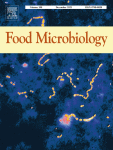Ver ítem
- xmlui.general.dspace_homeCentros Regionales y EEAsCentro Regional Entre RíosEEA ConcordiaArtículos científicosxmlui.ArtifactBrowser.ItemViewer.trail
- Inicio
- Centros Regionales y EEAs
- Centro Regional Entre Ríos
- EEA Concordia
- Artículos científicos
- Ver ítem
Mycofumigation of postharvest blueberries with volatile compounds from Trichoderma atroviride IC-11 is a promising tool to control rots caused by Botrytis cinerea
Resumen
Botrytis cinerea, the causal agent of the gray mold, is a filamentous fungus that infects blueberries and can cause important production losses in postharvest storage. Considering that the use of synthetic fungicides is not allowed on blueberries in postharvest conditions, alternative and natural strategies are needed to control gray mold. The objective of this work was to evaluate the capability of volatile organic compounds (VOCs) produced by
[ver mas...]
Botrytis cinerea, the causal agent of the gray mold, is a filamentous fungus that infects blueberries and can cause important production losses in postharvest storage. Considering that the use of synthetic fungicides is not allowed on blueberries in postharvest conditions, alternative and natural strategies are needed to control gray mold. The objective of this work was to evaluate the capability of volatile organic compounds (VOCs) produced by Trichoderma atroviride IC-11 to control B. cinerea growth in blueberries after harvest.These VOCs inhibited almost completely B. cinerea growth in vitro. The most abundant volatile compound was 6-pentyl-α-pyrone (6PP). In vitro assays with pure 6PP confirmed its antifungal activity. The incidence of gray mold was evaluated in blueberries inoculated with B. cinerea and exposed to volatiles of T. atroviride IC-11. Gray mold incidence among those stored in air at 20 °C for 14 days was 100%, while the incidence among the volatile-treated fruit was 17%. Gray mold incidence among those stored in air at 4 °C for 31 days was 82%, while the incidence among the volatile-treated fruit was 11%. T. atroviride IC-11 VOCs inhibited mycelial growth and conidia germination of B. cinerea. The binding of VOCs to the surface of hyphae caused their vacuolation and deterioration. Selective cytotoxicity of 6PP on B. cinerea was observed but not on human intestinal cells at specific concentrations that controlled gray mold.
The postharvest mycofumigation of blueberries with T. atroviride IC-11 VOCs is a promising approach to protect these fruits from gray mold.
[Cerrar]

Autor
Bello, Fernando;
Montironi, Ivana Dalila;
Medina, María Belén;
Munitz, Martín Sebastián;
Ferreira, Flavia Vanina;
Williman, Celia;
Vazquez, Daniel Eduardo;
Cariddi, Laura Noelia;
Musumeci, Matías Alejandro;
Fuente
Food Microbiology : 104040 (Available online 14 April 2022)
Fecha
2022-04
Editorial
Elsevier
ISSN
0740-0020
Formato
pdf
Tipo de documento
artículo
Palabras Claves
Derechos de acceso
Embargado
 Excepto donde se diga explicitamente, este item se publica bajo la siguiente descripción: Creative Commons Attribution-NonCommercial-ShareAlike 2.5 Unported (CC BY-NC-SA 2.5)
Excepto donde se diga explicitamente, este item se publica bajo la siguiente descripción: Creative Commons Attribution-NonCommercial-ShareAlike 2.5 Unported (CC BY-NC-SA 2.5)

